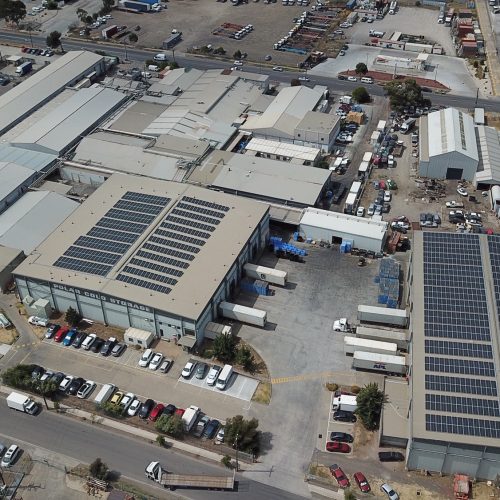Battery storage has been a game-changer in the renewable energy sector, but for many years, cost was a significant barrier to adoption. Businesses that invested in solar were often hesitant to include batteries due to the high upfront costs and uncertainty around the payback period.
Batteries typically have a lifespan of around ten years, which presented a challenge: by the time the investment in a battery was recouped, the battery itself might be nearing the end of its useful life, requiring another round of investment.
However, the landscape is changing. With advancements in technology and a steady decline in battery costs, the payback period has become much more reasonable, making battery storage a viable option for businesses looking to maximise the return on their renewable energy assets.
The Shift in Economics: Viable Financial Returns
The decreasing cost of batteries has made it possible for businesses to achieve a solid financial return on their investment. This is particularly relevant for those considering installing solar for the first time.
Including battery storage in the initial setup can provide substantial benefits beyond just displacing grid energy. Batteries allow businesses to store excess solar energy and use it during peak times when electricity costs are higher, or even sell it back to the grid through the wholesale market, generating additional revenue.
For those who have already installed solar, retrofitting their system with battery storage can still yield significant advantages. It enhances the system’s overall efficiency, reduces reliance on the grid, and further drives down electricity costs.
Designing Your Solar Array with Battery Storage
For businesses considering solar, it’s essential to think about battery storage during the proposal stage.
While the savings potential of batteries depends on factors like historical energy usage, peak demand, and the ability to participate in the wholesale market, the inclusion of batteries opens new revenue opportunities. By storing excess solar energy and selling it back to the grid during peak times, businesses can directly boost their savings and profitability, thereby increasing their return on investment (ROI) over time.

For example, Acacia Energy is currently working with a large business in the hospitality sector in regional New South Wales which has significant evening load. The building energy usage is relatively steady from morning until late at night, making it an ideal candidate for solar and battery integration.
Analysis showed that adding batteries to their solar system would significantly reduce their grid energy requirements, providing a more stable energy supply and contributing to long-term cost savings. Solar with battery is predicted to increase first year savings by over $50,000 and increase savings at the 10 year mark by over $500,000.
| Technology | Savings – Year 1 | Savings – Year 10 | |
| Solar Only | 250kWp Solar | $102,874 | $1,019,092 |
| Solar plus BESS | 360kWp Solar + 100kW/200kWh BESS | $154,276 | $1,531,546 |
Adding Batteries to Pre-existing Solar Systems
For businesses that already have solar systems in place, the prospect of retrofitting with batteries is worth exploring. In some cases, the advice to simply add more solar panels and a large battery may not always yield the best financial outcomes.
Acacia Energy recently conducted an analysis for a club in rural New South Wales that already had solar installed. Instead of adding more solar and a large battery as previously advised, the analysis showed that installing a smaller battery would achieve a 14% rate of return, improving system outcomes and increasing overall savings.
Choosing the Right Battery Technology
When it comes to selecting battery storage, it’s important not to be swayed by brand names alone. The choice of battery should be driven by the desired outcomes of the system rather than by marketing.
Consultants and energy providers should remain technology agnostic, focusing on products that are reliable, cost-effective, and come with strong warranties and local support.
Acacia Energy, for example, works with a range of battery technologies to ensure that each client receives a solution tailored to their specific needs and circumstances. We exclusively partner with Original Equipment Manufacturers (OEM) that have dedicated full-time representation in Australia, ensuring swift resolution of any warranty issues. Additionally, we prioritise technology featured on the Bloomberg International Bankability Index, as it has been proven to be commercially reliable.

Noumi Foods – A Custom Solution with Massive Savings
One of the standout examples of how battery storage can revolutionise a business’ energy strategy is the project Acacia Energy completed for Noumi Foods. Faced with frequent grid disruptions that threatened to halt operations and resulted in annual losses of up to $220,000, Noumi sought a reliable solution to reduce their reliance on grid energy.
Acacia Energy designed a bespoke system that paired a 1.25MWh Tesla Battery with Voltage Optimisation equipment and a 3.8MW rooftop solar PV array.
The results were transformative. The Tesla battery was designed to support up to two hours of critical load operations during power outages, ensuring uninterrupted power supply. This setup not only eliminated the potential for costly operational interruptions but also provided substantial cost savings of $1 million per annum. The solution aligned with Noumi’s sustainability goals, helping them offset 5,589 tonnes of CO2 annually.
This project demonstrates that the right combination of solar and battery storage can deliver not only reliability and cost savings but also significant environmental benefits, positioning businesses like Noumi Foods to compete more effectively in their markets.
Partnering for Success
As battery storage becomes more affordable and the payback period more reasonable, businesses have a tremendous opportunity to enhance their renewable energy systems and achieve significant financial returns.
Whether you’re considering solar for the first time or looking to retrofit an existing system, partnering with an experienced energy provider like Acacia Energy can help you navigate the complexities of battery storage and design a solution that maximises your ROI.
Get in touch with Acacia Energy today to book your no-obligation energy assessment and take the first step towards a more sustainable and cost-effective energy future.


